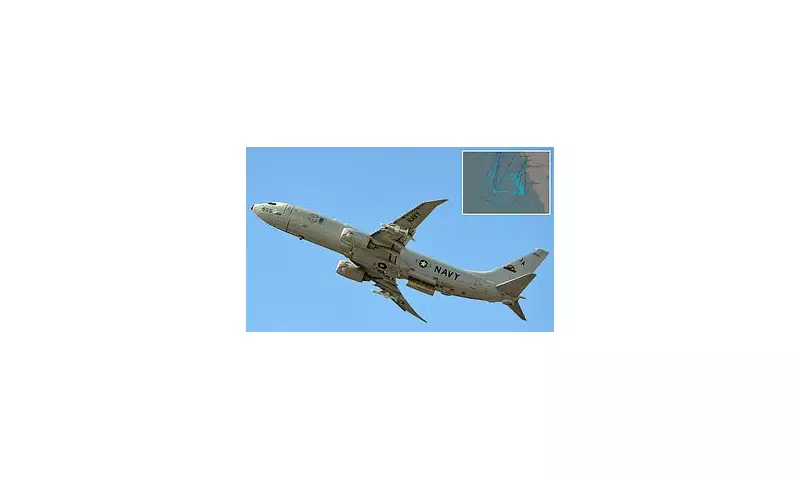
In a dramatic escalation of cross-border security operations, a highly advanced US Air Force surveillance aircraft has been photographed conducting covert missions over one of Mexico's most notorious drug smuggling corridors.
Sophisticated Surveillance Over Sinaloa
The RC-135W Rivet Joint, a cutting-edge electronic surveillance plane capable of intercepting communications across vast territories, was tracked circling repeatedly over the mountainous regions of Sinaloa. This area represents a crucial corridor for narcotics transportation towards the United States border.
Flight tracking data reveals the aircraft executed multiple elliptical patterns at approximately 30,000 feet, suggesting intensive monitoring operations targeting ground communications and movement patterns.
Unprecedented Cross-Border Security Measures
Military analysts describe this operation as particularly significant given the aircraft's sophisticated capabilities and the sensitive nature of flying surveillance missions over foreign territory. The RC-135W represents one of America's most valuable intelligence assets, typically reserved for high-priority national security operations.
Key capabilities of the deployed aircraft include:
- Advanced signals intelligence (SIGINT) collection systems
- Real-time communication interception technology
- Multi-spectrum surveillance equipment
- Long-range endurance for extended operations
Strategic Response to Escalating Drug Trade
The operation coincides with increasing concerns among US security agencies about the growing sophistication and firepower of Mexican drug cartels. Recent intelligence reports indicate trafficking organisations have significantly enhanced their operational capabilities and cross-border penetration methods.
"This level of surveillance deployment demonstrates how seriously Washington is taking the threat from sophisticated trafficking networks," commented a defence analyst familiar with cross-border operations.
International Cooperation and Tensions
While the exact nature of coordination between US and Mexican authorities remains unclear, the operation highlights the complex dynamics of cross-border security cooperation. Such surveillance missions typically require delicate diplomatic negotiations and careful balancing of national sovereignty concerns.
The deployment comes amid ongoing bilateral discussions about enhancing security cooperation and intelligence sharing to combat transnational organised crime networks operating across the Mexico-US border region.





